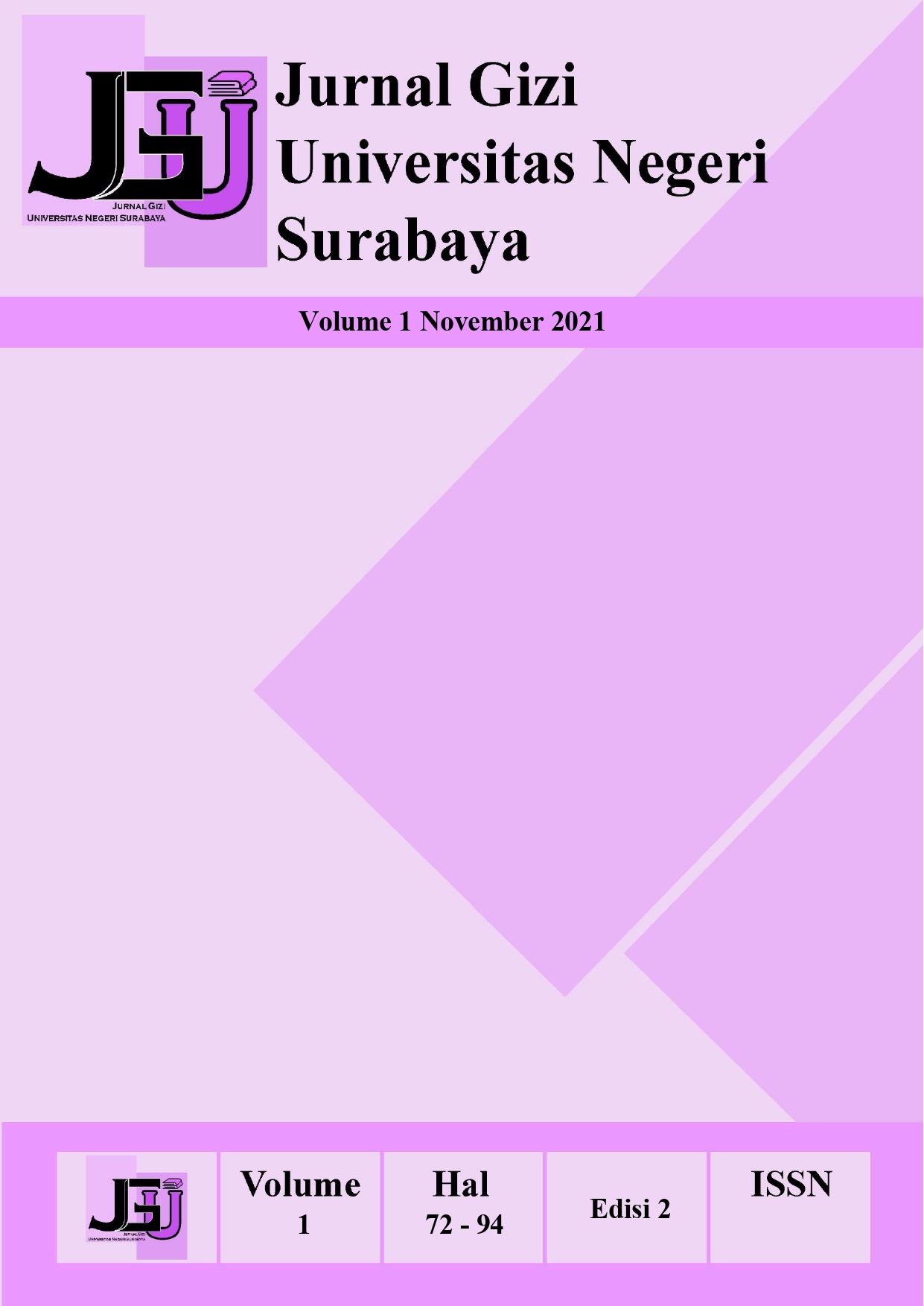Relationship Of The Intensity Of Smartphone Use To Physical Activity And Food Consumption Level In Unesa Nutrition Students In The Era Of The Covid-19 Pandemic
Keywords:
Intensity of Smartphone, Physical Activity, Consumption levelAbstract
The Covid-19 pandemic affects activities in the community, one of which is learning activities. Learning is done online supported by the use of the internet and electronic media, one of which is a smartphone. Smartphones can cause behavioral changes related to physical activity and a person's level of food consumption. This study aims to determine the relationship between the intensity of smartphone use on physical activity and the consumption level for Unesa Nutrition students in the Covid-19 pandemic era. This type of research is analytic observational with a cross sectional research design with a correlational study approach. The sample of this study was nutrition students class 2018 and 2019 using total sampling technique which collected 112 students. Data collection in this study used a questionnaire consisting of a Smartphone Use Intensity questionnaire, an International Physical Activity Questionnaire (IPAQ) and a Food Record questionnaire with data retrieval via google form. The data was tested using the Spearman test. The results of statistical analysis showed a significant relationship between the intensity of smartphone use and physical activity with ap value = 0.031 (P < 0.05) and there was a significant relationship between the intensity of smartphone use and the level of food consumption with ap value of - value = 0.006 (P < 0.05).Downloads
Download data is not yet available.
Downloads
Published
2021-11-30
How to Cite
Fristanti, Y. M. (2021) “Relationship Of The Intensity Of Smartphone Use To Physical Activity And Food Consumption Level In Unesa Nutrition Students In The Era Of The Covid-19 Pandemic”, Jurnal Gizi dan Kesehatan Nusantara, 1(02), pp. 89–94. Available at: https://ejournal.unesa.ac.id/index.php/GIZIUNESA/article/view/43081 (Accessed: 4 December 2025).
Issue
Section
Artikel
 Abstract views: 396
,
Abstract views: 396
, PDF Downloads: 684
PDF Downloads: 684


